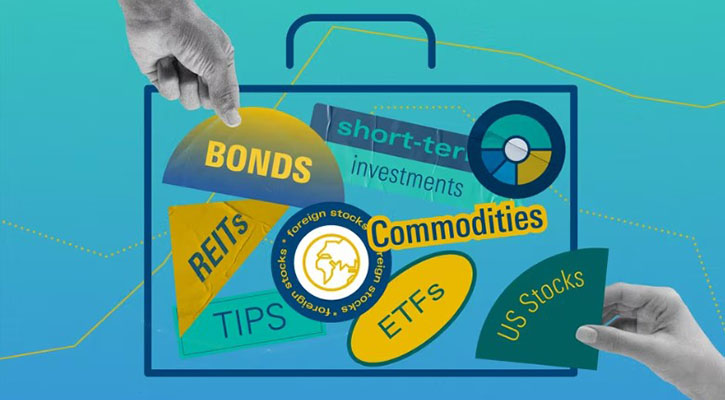Investment funds falling in the Morningstar TMT category do have both similarities and differences, which is important to know when building a portfolio of funds. Those who already have sufficient exposure to telecoms, for example, are likely to want to minimise their risk by choosing a fund with a minimal telecoms holding.
This analysis aims to illustrate some of the similarities and differences of the funds in the TMT category.
Some funds invest in all of TMT while others specialise in one area such as media or the Internet. Some funds invest all over the world while others focus on a chosen region. Most funds are actively managed but a few track specialist indices. While the fund’s name may give some indication of its holdings and investment strategy, investigating the actual portfolio holdings is essential.
Looking at the industries breakdown data of the MSCI World Index, which measures the performance of the global stockmarket, for the period February 29th 2000 [near the peak of the markets] until April 18th 2001, the market correction is apparent.

Information technology (IT) industry fell by 53%, telecommunication services by 46% and media was down by 25%. Taking into consideration the bumpy 18 months TMT investors have experienced, choosing the right funds according to an individual’s investment strategy and risk profile has become even more important.
Broadly balanced funds versus specialist
A wide range of stockmarket sectors falls into the TMT category and funds can invest in all or some or just one of them and still be classified as a TMT fund. Therefore it is essential to know what a fund holds to determine your level of exposure. Potential sectors available include IT, semiconductors, telecommunications, mass media, the Internet, and electronics. These tables of a range of TMT funds highlights some of the differences:
Number of Sectors*
|
Fund name |
Number |
|
Aberdeen Technology |
8 |
|
Cazenove Global Technology |
13 |
|
Goldman Sachs Internet Tollkeeper |
4 |
|
Goldman Sachs Global Technology |
10 |
|
Henderson Global Technology |
7 |
|
Invesco GT Technology |
3 |
|
Investec Wireless World |
7 |
|
M&G Global Technology |
8 |
|
Solus Technology Plus |
9 |
Where the fund company lists a sector as 'other', it is not included in the total.
Top investment sectors*
|
Fund name |
1 |
2 |
3 |
|
Aberdeen Technology |
software/services (28%) |
semiconductors (24%) |
telecoms (13%) |
|
Cazenove Global Technology |
semiconductors (20%) |
systems software (14%) |
telecoms equipment (11%) |
|
Goldman Sachs Internet Tollkeeper |
media (30%) |
technology (28%) |
Internet (24%) |
|
Goldman Sachs Global Technology |
application software (28%) |
multimedia networking (17%) |
semiconductors (16%) |
|
Henderson Global Technology |
communications (27%) |
software (22%) |
computing (17%) |
|
Invesco GT Technology |
IT (68%) |
telecoms (8%) |
industrials (7%) |
|
Investec Wireless World |
non-cyclical services (32%) |
IT (21%) |
general industrials (19%) |
|
M&G Global Technology |
semiconductors (19%) |
telecoms services (15%) |
Internet (15%) |
|
Solus Technology Plus |
software (47%) |
IT (18%) |
telecoms (12%) |
The figures are rounded to the nearest percent.
The information in the table above is taken directly from the fund companies. The fund management groups may use different names for the sectors, which can make it difficult to distinguish between the funds. For example, the Cazenove Global Technology fund lists 13 investment sectors and the Invesco GT Technology only three. However the 68% in IT in the Invesco fund may be encompassing several sub-sectors which Cazenove has chosen to list separately.
While a fund broadly covering the TMT sector carries more risk than a general all-companies fund, those focusing on a specific sector of TMT often carry even more risk. A fund concentrating on telecoms will have all the advantages of a telecoms market rise but no exposure to other sectors to balance out any downfalls. Focused funds tend to be more appropriate for investors who have already built up a general portfolio and are looking to diversify. They are also good for investors who need specific exposure to a part of the TMT sector.
The name of the Framlington NetNet fund seem to suggest investment in the Internet but in fact only 24% is invested in pure Internet companies, with infrastructure accounting for 65% and related sectors the remaining 11% [data as of March 31st 2001].
Another sector-specific fund, the Invesco GT Telecommunications fund, is mainly invested in telecoms (40%), with IT and the consumer discretionary sector composing an additional 29% and 9% respectively [data as of March 30th 2001].
Whether investors should narrow their focus or go for a wide spread depends on their age, current investments and risk profile.
Global versus regional
The importance of geography in relation to sector funds is debatable. Does it make a difference whether the technology investments are in the US, Europe or Asia? Overall the TMT sub sectors move in synch with each other across the world markets and individual sector diversification becomes more important that geographical diversification. A semiconductor company in Taiwan tends to experience the same market conditions as one in the US, but semiconductors as a whole may be in better shape than the telecoms sector or vice versa. The main country-specific influence is currency risk. For example, if the dollar is strong against the yen, US companies might find it more cost efficient to import semiconductors from Taiwan rather than buy locally.
Just because a fund has a good balance between the TMT sectors does not guarantee country diversification. Funds may be global or regional in investment scope.
Because much of the technology sector is based in or originates from the US, many funds labelled global have a strong North American bias.

Although many technology companies are US-based, certain funds do specialise in other regions of the world, most often Asia and Europe.
As the name indicates, the JF Pacific Technology Fund focuses on technology companies in the Asian region but mainly in Japan (39%) and Taiwan (36%). Added to its narrow geographical investment area is a 65% stake in electronic technology sector that could leave investors susceptible to movements in that sector [data as of March 31st 2001].
Aberdeen European Technology has investments in 13 countries with the biggest stake in the UK (19%), followed by France (16%) and Germany (14%) [data as of March 30th 2001].
Awareness of a TMT fund’s geographical diversification is valuable when viewing a portfolio as a whole. However, diversification across sectors tends to be a more important in reducing risk.
Active versus passive
Investors can either pile their money into an index-tracking fund or trust the fund managers to find the best tech investments. The active versus passive argument has supporters on both sides. In a market with inefficiencies [an efficient market is one in which the share price of a company always reflects all available information about the company and adjusts immediately to new data], active fund managers may have the edge if their abilities to weed out the good from the bad are successful. Because passively managed tracker funds follow the indices down as well as up, a sensible balance according to individual risk profile should be made.
Most funds in the Morningstar TMT category are actively managed but some passive funds are available.
The Close FTSE techMARK fund tracks the performance of the FTSE techMARK 100 Index. Launched on November 4th 1999, this index focuses on small and medium sized companies listed in the UK of technology stocks that was launched in November 1999. Companies in this fund have a market capitalisation ranging from £50m to over £4 billion. Current index members include Baltimore Technologies, Phytopharm, Shire Pharmaceuticals and Bookham Technology.
The Investec Wired Index Trust mirrors the Wired Index which tracks the share prices of 40 public companies that the editors of Wired magazine have chosen to represent the forces driving the new economy. The companies included are not necessarily technology companies but also those that harness the technology efficiently to improve their positions in different industries. Wal-Mart Stores and Marriott International sit beside Lucent Technologies and Yahoo.
A hybrid of sorts is the Framlington NASDAQ fund whose companies are actively chosen but the selection is limited to those listed on the NASDAQ Stock Market. The NASDAQ is the second largest market in America and was the world’s first electronic stock market. Listed companies include Intel, Dell, MP3.com, Microsoft and Cisco.
What now?
TMT investors have been subjected to a chaotic ride recently and many have questioned the sense in staying invested. Others see this as an ideal buying opportunity. The consensus seems to be that current investors should stay in and potential investors with some leeway for a riskier investment could benefit from the market recovery.
Investors should investigate the holdings of their funds before making additional purchases. Funds can be X-rayed in Morningstar’s My Portfolio to provide an aggregate picture of an investor’s exposure to each sector. From there additional investments can be made to fit into individual investment objectives and risk profiles. For example, a portfolio showing a heavy telecoms weighting could be balanced by a fund with a stronger technology focus. Funds can be added into hypothetical portfolios to achieve the desired balance.
* Data as of: Aberdeen Technology - March 30th 2001; Cazenove Global Technology – March 30th 2001; Goldman Sachs Internet Tollkeeper – March 31st 2001; Goldman Sachs Global Technology – March 31st 2001; Henderson Global Technology – March 31st 2001; Invesco GT Technology – March 30th 2001; Investec Wireless World – April 17th 2001; M&G Global Technology – March 30th 2001; Solus Technology Plus - February 28th 2001.
** Data as of: Aberdeen Technology - March 30th 2001; Cazenove Global Technology - March 30th 2001; Henderson Global Technology March 31st 2001; Investec Global Technology – April 17th 2001; M&G Global Technology January 31st 2001; SocGen Technology March 31st 2001




























